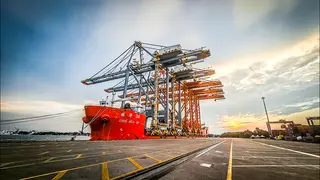From Kolkata in the East to Ahmedabad in the West, India’s urban mobility landscape is fast changing. On December 30, 2022, Prime Minister Narendra Modi inaugurated the Joka-Taratala stretch of India’s oldest metro rail system in Kolkata. A fortnight earlier, he had inaugurated the first phase of Nagpur Metro in Maharashtra. In September, in his home State Gujarat, Modi inaugurated the first phase of Ahmedabad Metro. These are not isolated transport projects, rather they make a connecting link for a larger urban multi-modal public transit infrastructure for the new-generation cities in India.
Besides these metro rail projects, the Prime Minister has also been on an inauguration spree launching inter-city fast express trains, one after the other, under the Vande Bharat category. The eighth in the category was launched on January 15, 2023 between Secunderabad and Visakhapatnam.
All-inclusive urban mobility
A sense of urgency emanates from the government’s own estimation of nearly half of India’s population to be living in cities by 2050, up from about one-third currently. This would overwhelm the existing urban mobility infrastructure such as city buses or local trains. Policy makers, therefore, now look at urban mobility with a comprehensive view of providing end-to-end connectivity for the fast movement within and between the cities.
Former Chief Scientist of the World Health Organisation, Soumya Swaminathan was the latest to voice the commuters’ plights over accessibility and convenience as she recently shared her experience of taking the “clean, efficient and environmentally friendly” Chennai Metro from the airport. But in her Tweet, she also highlighted the “Need to improve access from domestic terminal to Metro station, especially for people with luggage.”
Realising such practical hassles, during Ahmedabad Metro launch, Prime Minister Modi had laid emphasis on “ensuring a modern system of transport in the cities, seamless connectivity and one mode of transport to support the other.”
India’s Metro network has expanded to twelve cities with a combined 824 km. There is also an enhanced air connectivity between small cities under the UDAN (Ude Desh ka Aam Nagrik) scheme. Several cities already have operational Bus Rapid Transit Systems (BRTS), in addition to the local mass transport systems such as city buses, local trains, among others. But large cities without efficient public transport make the population less productive as they are compelled to spend more time in traffic.
The thrust now, experts believe, should be on connecting the missing link between the existing modes of travel to make multimodal urban transport a reality.
According to urban planning experts, ease, speed and convenience are the key characteristics of public transport. Currently, most Indian cities lack a linkage among these systems. A city bus transport can’t take high-speeds because of traffic signals, congestions, etc but connects well in the city, while a high-speed metro network would be fast but can’t provide last-mile connectivity.
Mandeep Singh, Former Dean at School of Planning and Architecture, New Delhi says, “We need a combination of high-speed and convenience for mass transit, which requires a multi-modal system.” But Singh believes that in most cities, the government-run city buses run independent of metro systems thereby leaving it to e-rickshaw and other private mass transport models to take care of last mile connectivity. “This isn’t a comprehensive, planned transport system. The application and resources will decide an effective multi-modal system, along with the integration of the existing transport modes,” added Singh.
Integration needed
Sample this: A person disembarking at an airport or a train station, hops onto a metro rail, which takes him deep inside the city where he gets off to take a BRTS or a city bus service to reach closer to his destination.
“We need integration at multiple levels. A physical integration with common stations for multiple modes thereby reducing hassles of movement from one place to the other. Fare and ticketing integration to make possible travelling through multiple modes on a single ticket. And institutional integration with multiple operators to plan, coordinate and execute projects in coordination,” said Rutul Joshi, who teaches urban planning at CEPT University in Ahmedabad.
Joshi underlines three indicators for efficient public transport. “First, to have at least 1/3rd of the population using public transport. Second is to have at least 60 per cent of the population covered through public transport along the route and third is to ensure city bus ratio of 50 buses per lakh population besides the other modes of mass transit. This is to make urban public transit more attractive,” Joshi said.
It is to be seen how the policy makers strike a balance between available resources and fulfilling the need for future urban mobility.









Comments
Comments have to be in English, and in full sentences. They cannot be abusive or personal. Please abide by our community guidelines for posting your comments.
We have migrated to a new commenting platform. If you are already a registered user of TheHindu Businessline and logged in, you may continue to engage with our articles. If you do not have an account please register and login to post comments. Users can access their older comments by logging into their accounts on Vuukle.